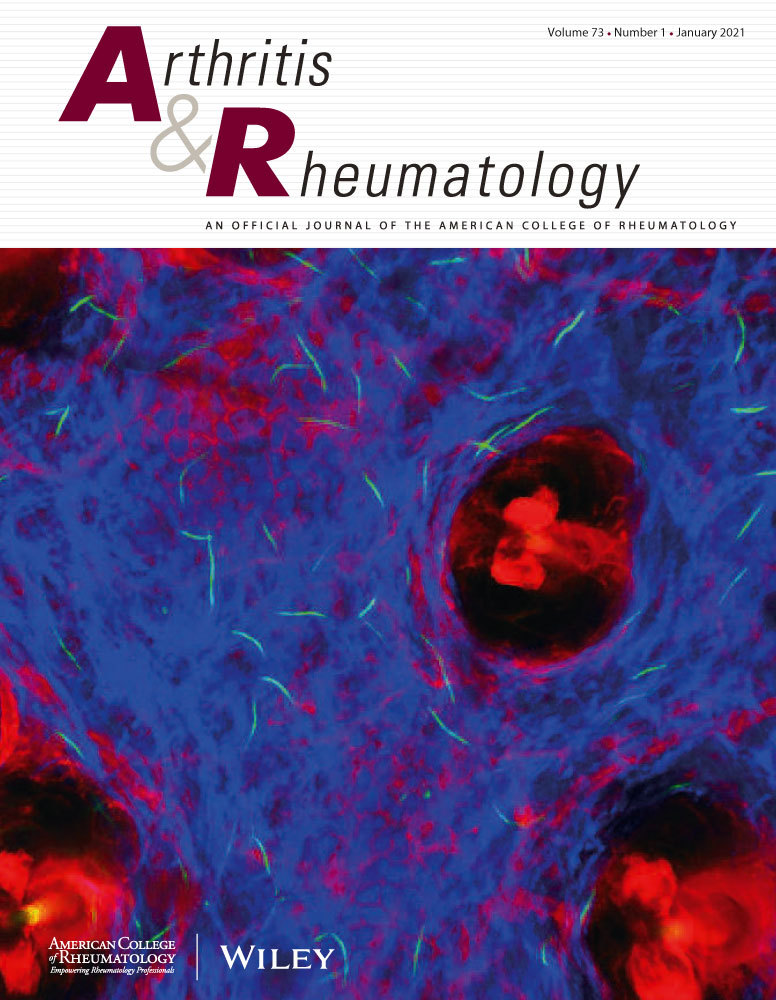National Mortality Databases to Assess Disease Burden in Systemic Autoimmune Diseases: A Valuable Resource, But with Limitations.
IF 10.9
1区 医学
Q1 RHEUMATOLOGY
引用次数: 0
Abstract
Disease-specific mortality statistics are useful measures of disease burden. Population-based studies from a few United States counties have reported mortality in systemic autoimmune diseases (SAID). However, due to substantial differences in the population structure of these counties as well as relatively small numbers of SAID deaths in these counties, it is difficult to extrapolate their findings to assess the SAIDs' national burden. In this regard, national mortality databases offer a large reference population, which is hard to assemble in individual SAIDs. However, two concerns are persistently raised regarding mortality databases for SAIDs: misclassification and under-recording. While misclassification of SAIDs is common in health records and administrative databases, it appears to be rare on death certificates among decedents that did not have a SAID. However, SAIDs are under-recorded in death certificates. The under-recording of SAIDs does not differ by sex and race/ethnicity, but it is common in elderly that die of cardiovascular diseases, neoplasms, and chronic obstructive pulmonary disease. SAIDs' under-recording may occur, because it may be difficult to assign a specific SAID manifestation or treatment complication responsible for death. Furthermore, a SAID is commonly listed as a contributing cause, rather than as the underlying cause of death, on death certificates, which advocates using the multiple-causes-of-death database for SAIDs. Nevertheless, until we have large-scale prospective outcomes data, mortality data from the National Vital Statistics System offer the valuable estimates of SAIDs' national burden, which can be used for setting research priorities, healthcare policy planning, resource allocation, and precision public health.评估系统性自身免疫性疾病疾病负担的国家死亡率数据库:一个有价值的资源,但有局限性。
特定疾病死亡率统计是衡量疾病负担的有用措施。来自美国几个县的基于人群的研究报告了系统性自身免疫性疾病(SAID)的死亡率。然而,由于这些县的人口结构存在很大差异,而且这些县的SAID死亡人数相对较少,因此很难推断他们的研究结果来评估aids的国家负担。在这方面,国家死亡率数据库提供了大量的参考人口,而这些人口很难在单个said中收集。然而,关于aids的死亡率数据库一直存在两个问题:分类错误和记录不足。虽然在健康记录和管理数据库中对SAID的错误分类很常见,但在没有SAID的死者的死亡证明中,这种情况似乎很少见。然而,aids在死亡证明中记录不足。甾体抗炎药的低记录在性别和种族/民族之间没有差异,但在死于心血管疾病、肿瘤和慢性阻塞性肺疾病的老年人中很常见。由于很难确定导致死亡的特定SAID表现或治疗并发症,因此可能会出现SAID记录不足的情况。此外,在死亡证明上,SAID通常被列为促成原因,而不是潜在的死亡原因,这提倡使用多种死因数据库来处理SAID。然而,在我们获得大规模的前瞻性结果数据之前,来自国家生命统计系统的死亡率数据提供了对aids国家负担的有价值的估计,可用于确定研究重点、医疗保健政策规划、资源分配和精确的公共卫生。
本文章由计算机程序翻译,如有差异,请以英文原文为准。
求助全文
约1分钟内获得全文
求助全文
来源期刊

Arthritis & Rheumatology
RHEUMATOLOGY-
CiteScore
20.90
自引率
3.00%
发文量
371
期刊介绍:
Arthritis & Rheumatology is the official journal of the American College of Rheumatology and focuses on the natural history, pathophysiology, treatment, and outcome of rheumatic diseases. It is a peer-reviewed publication that aims to provide the highest quality basic and clinical research in this field. The journal covers a wide range of investigative areas and also includes review articles, editorials, and educational material for researchers and clinicians. Being recognized as a leading research journal in rheumatology, Arthritis & Rheumatology serves the global community of rheumatology investigators and clinicians.
 求助内容:
求助内容: 应助结果提醒方式:
应助结果提醒方式:


